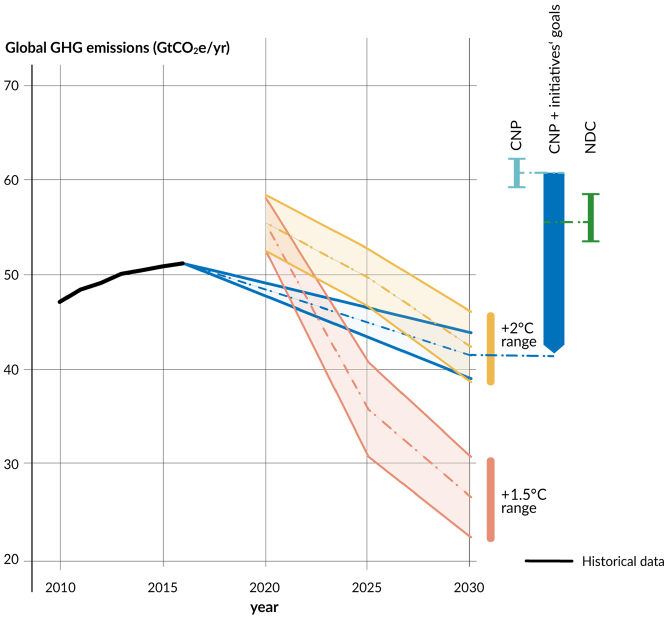This article quantifies the potential greenhouse gas (GHG) emission reductions resulting from the full implementation of major international cooperative initiatives’ (ICIs) goals. We develop criteria to select the most significant ICIs to aggregate, and propose novel methodologies to quantify emission reduction impacts and account for overlaps between them. The analysis was conducted for 17 initiatives, across eight sectors and ten major emitting economies accounting for roughly two-thirds of global GHG emissions in 2019. ICIs are international activities outside the UNFCCC driven by cities, regions, businesses, and other non-state and subnational actors.
Main findings:
Our analysis shows that the combined achievement of initiatives’ reduction goals could reduce global emissions in 2030 by 18 to 21 GtCO2e/year in addition to current national policies (total of 60 to 63 GtCO2e/year), down to 39-44 GtCO2e/year. If delivered fully, reductions from these 17 initiatives would help move the global emissions trajectory within the range of a 2°C-consistent emission pathway by 2030, correcting global course towards alignment with long-term Paris temperature goals, although a significant gap would remain to reduce emissions to a 1.5°C-consistent pathway.
Figure 1. Potential GHG emissions reductions resulting from full implementation of ICIs (‘CNP plus initiatives’ goals’ scenario) up to 2030.
Key policy insights:
- We propose a transparent and robust methodology to aggregate GHG mitigation potential of ICIs, accounting for overlaps between ICIs.
- If major initiatives meet their goals and do not change the course of other existing climate actions, they could make large contributions by 2030 towards global efforts to stay within the range of a below 2°C-consistent emission pathway by 2030. The full suite of existing initiatives beyond those in this analysis could further increase ambition towards achieving the Paris Agreement’s temperature goals.
- Cities and regions, businesses and forestry initiatives account for significantly more than half of all possible emission reductions from ICIs; implementation of their goals should be a key policy focus.






